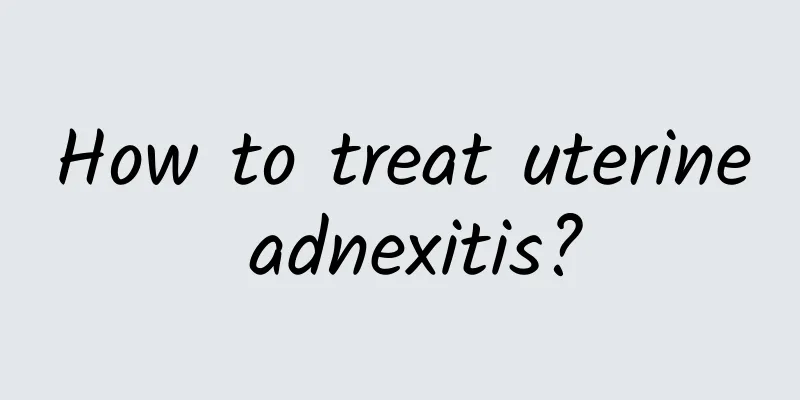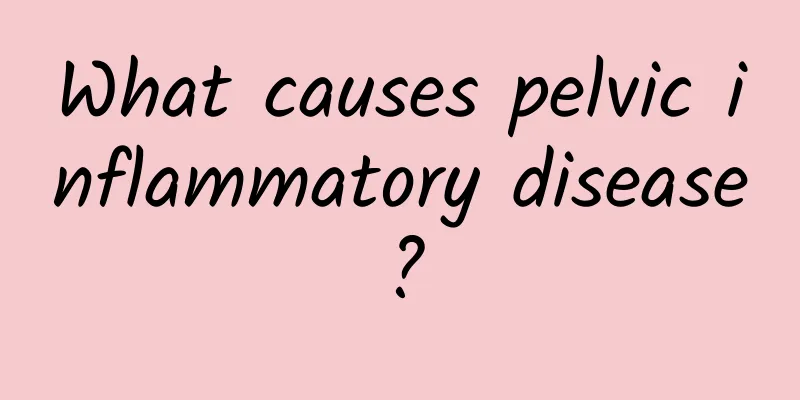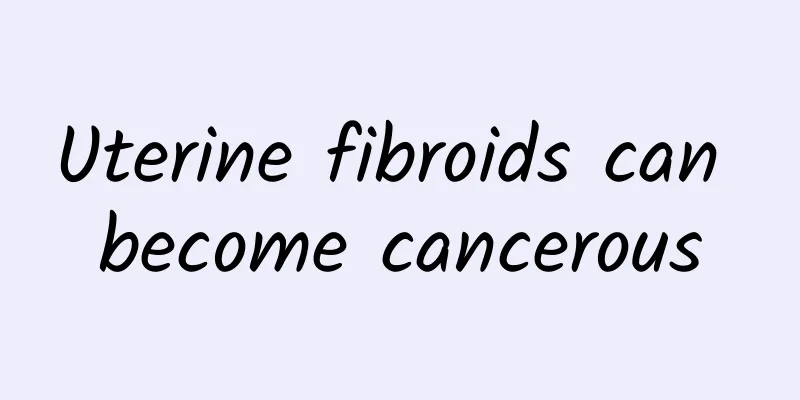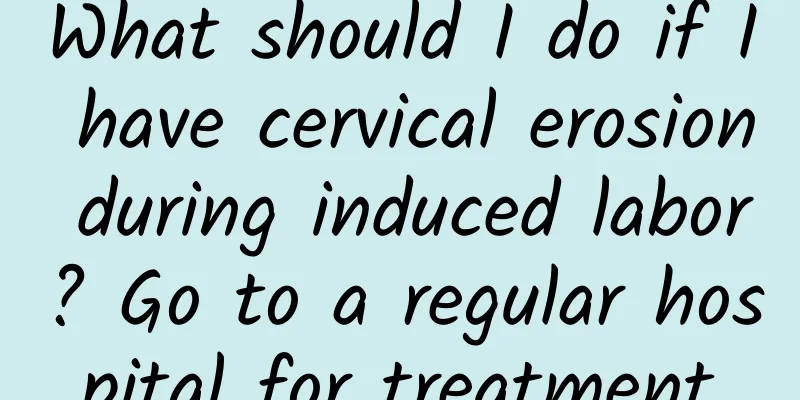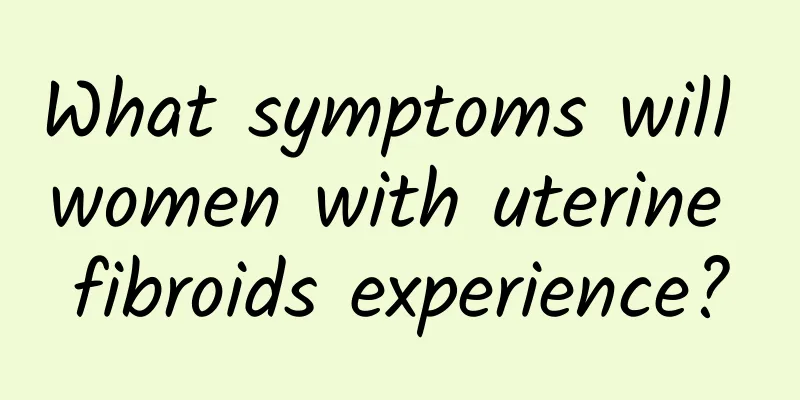What should I do if I have uterine fibroids? Treatment methods for uterine fibroids
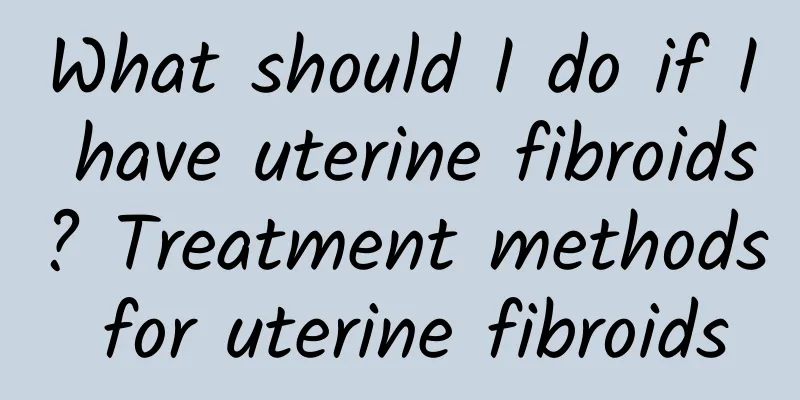
|
The incidence of uterine fibroid disease is relatively high in real life. This disease also troubles many women in our lives, endangers their health and brings them pain. What is the surgical treatment method for uterine fibroid disease? Let's take a look together. Surgery Under normal circumstances, the intersection of the uterine artery and the ureter is located at the level of 1 cm next to the internal cervical opening. However, when there are multiple myomas, especially in the lower part of the uterus, cervical myomas grow to the broad ligament, their anatomical position may be changed, and even the ureter may grow from the front or side wall of the tumor. Therefore, in the above case, the ureter should be found from the posterior leaf of the broad ligament, and its fall should be confirmed along its direction to avoid surgery and accidental injury. Hysterectomy: Pull the uterus outward from the pelvis, and use your fingers to press against the cervix to push the bladder down again to a level 1 to 2 cm below the external cervical opening. When pushing the bladder sideways 1 cm away from the cervix to cut the anterior vaginal wall, avoid damaging the bladder and ureter; and push the loose connective tissue under the peritoneum between the ends of the uterosacral ligaments on both sides out of the rectum to 2 cm below the external cervical opening. Expose the posterior vaginal dome to prevent injury to the rectum when cutting the posterior vaginal wall. Touch the external cervical opening with two fingers to check whether the degree of freedom is sufficient. Fill the area around the cervix with dry gauze to prevent vaginal secretions from contaminating the abdominal cavity. Cut the anterior and posterior vaginal domes until purple-blue or brown mucus flows out. Clamp the wall tissue on both sides of the vagina, including the vaginal artery, with two curved vascular clamps, and then use the curved tissue to cut the vaginal wall along the vaginal dome around the anterior and posterior lips of the cervix until the uterus is completely free. Simple abdominal hysterectomy: Improved conventional abdominal hysterectomy, with the advantages of simple operation, fast speed, less intraoperative bleeding, less damage, fast recovery, postoperative adnexal and vaginal prolapse (the adnexal is sutured to the round ligament stump and the adnexal is fixed to the round ligament), beautiful wound and short hospitalization time. Mini-abdominal hysterectomy: This operation is a slight improvement on the traditional abdominal hysterectomy in recent years. Mini-incision means that the length of the skin incision (longitudinal or transverse) is ≤6cm, the length of the fascia incision is greater than the skin incision, about 1~3cm at each end, and the Z-shaped parauterine tissue clamp is placed on the abdominal wall outside the uterus to remove the uterus. It is suitable for patients who are not obese and have good uterine activity, ≤12 weeks of pregnancy, and have one or more of the following conditions; vaginal hysterectomy is anatomically not feasible and adnexectomy is required. Extra-abdominal cervical conization hysterectomy: Its advantages are to further simplify the surgical steps, reduce surgical trauma, preserve the external cervical ring, and maintain the functions of the sacral ligament and main ligament. This method is different from the total hysterectomy with cervical fascia, which must cut the cervical ligament, damage the normal structure of the pelvic floor, and cannot leave the cervix. The operation does not damage the normal structure of the pelvic floor, not only significantly reduces ureteral damage, but also preserves the integrity and posterior round depth of the vagina, avoids the phenomenon of vaginal shortening of more than 4cm in traditional surgery, and can prevent the occurrence of stump cancer, so as to achieve the purpose of psychologically and physiologically retaining the cervix in patients. Suture the inherent ovarian ligament, round ligament and fallopian tube isthmus together, so that the appendages are suspended at the residual end of the round ligament to avoid chronic pelvic pain caused by ovarian pelvic floor prolapse. The residual end of the external cervical ring and its fascia side suture method are used to make the main ligaments on both sides close to the bridge structure, suspend the cervix and vagina, and prevent prolapse. The treatment of uterine ligaments and blood vessels is simpler, safer and more reliable than traditional methods. Vaginal hysterectomy: Vaginal hysterectomy is performed vaginally without abdominal interference, which can reduce pelvic and abdominal contamination. Patients recover quickly and have a shorter hospital stay. Vaginal surgery has a small field of view and limited exposure during surgery. The surgery is not as active as abdominal surgery and is prone to damage to the bladder, rectum and ureter. New concept of vaginal hysterectomy: Traditional TVH indications are mostly limited to parturients; uterus ≤ 12 weeks of gestation; uterine prolapse; no history of anterior pelvic and abdominal surgery; no adnexal lesions; no need for examination or removal of adnexal tissues. However, recently, with the improvement of surgical methods, the use of appropriate equipment, the improvement of surgical skills and the accumulation of doctor experience, its indications have changed significantly. Experts remind that uterine fibroids must be treated surgically in a timely manner. The above article also introduces the surgical treatment methods of uterine fibroids, hoping to help patients avoid treatment misunderstandings and recover as soon as possible after the disease is correctly treated. |
>>: What to do if you have uterine fibroids? Surgical treatment of uterine fibroids
Recommend
Symptoms of adnexitis may include abdominal pain
Symptoms of adnexitis may include abdominal pain....
Pork calories comparison! Which one is the fattest? Eat this way to avoid landmines...
Do you particularly like bacon when eating hotpot...
What is uterine fibroids? Tell me what is the cause of uterine fibroids
What is uterine fibroids? Uterine fibroids are a ...
Will cervical erosion affect pregnancy? Comprehensive introduction to cervical erosion related knowledge
Cervical erosion is a very common gynecological d...
Don't be a eating giant! 5 tips to avoid binge eating
There must be many women who continue to work unt...
What light can reduce the size of uterine fibroids? What mirror can best see uterine fibroids?
What light can reduce the size of uterine fibroid...
Can progesterone treat amenorrhea?
Progesterone , also known as progesterone, is a p...
What Chinese medicine can treat primary amenorrhea?
Primary amenorrhea can be treated with Chinese me...
Minimally invasive surgery is important for the treatment of ectopic pregnancy
Women are prone to ectopic pregnancy, and the fre...
What causes miscarriage? There are 4 reasons
The thing that women worry about most after becom...
Can TCM diagnose abnormal leucorrhea?
TCM can diagnose abnormal leucorrhea and improve ...
What is the diagnosis of endometrial tuberculosis?
Endometrial tuberculosis is a disease that is ver...
How to treat common vaginitis and cervicitis? Maintain good hygiene habits
Ordinary vaginitis can be treated with medication...
What foods are the nemesis of uterine fibroids? What can you eat to eliminate uterine fibroids?
What foods are the best for uterine fibroids? Thi...
Do women with chronic cervicitis need surgery? 3 effective treatments for chronic cervicitis are recommended
There are many treatments for chronic cervicitis....
